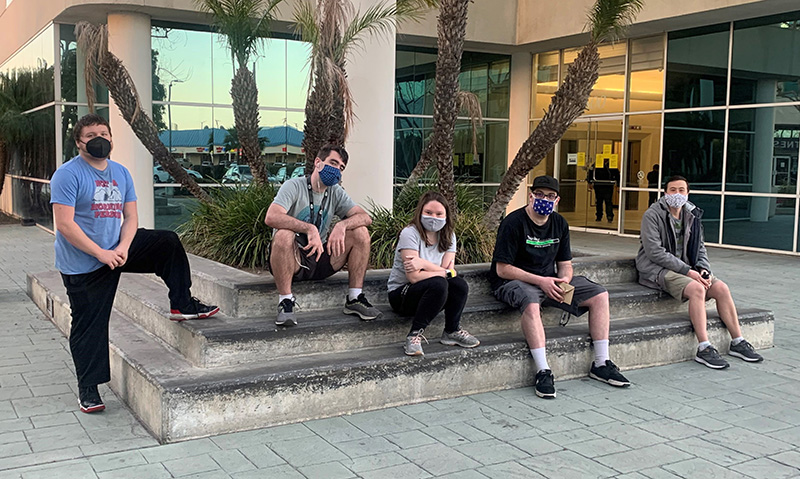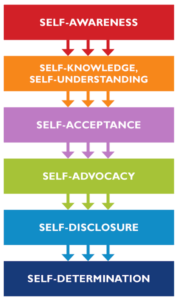Graduating high school, going to college, finding an apartment, landing that first job, getting married – these are all exciting milestones associated with the transition from high school to independent living. For adolescents with autism, formal planning for this transition begins at age 14 with the IEP team, however, it is never too early to begin introducing and reinforcing important independent living skills such as problem solving, adaptability, and self-advocacy.

CIP Long Beach students head out for walking and running club
Many young adults on the autism spectrum have the strong desire to experience these common milestones, yet reality often presents stark differences in outcomes. According to the National Autism Indicators Report (2017), more than half of adults with ASD continued to live in the family home after high school, and 40% of those surveyed did not receive any in-home supports. Even more alarming, a similar report found that “nearly one in three young adults had no community participation…no volunteer or community service activities, no lessons or classes outside of school, or no other community activities outside of school” (Roux et al., 2015, p. 16).
A variety of factors contribute to what is commonly referred to as “the services cliff,” the time immediately following high school when mandated special education services cease and the individual is left to find support from other sources, often without formal assistance. This lack of organized support increases the weight of responsibility on families. Parents of individuals with ASD may wonder how to identify the appropriate level of support and the least restrictive environment for their child – ideally an environment where they will have the opportunity to build meaningful relationships, engage in enriching activities, and embrace independence to the greatest extent.
While independence doesn’t look the same for everyone, comprehensive programs such as College Internship Program (CIP), focus on actively engaging young adults in the community and facilitating the acquisition of independent living skills in a supported living environment. CIP, which combines components of residential living, socialization, academic support, and vocational preparation, provides opportunities for young adults to learn independent living skills in the natural environment and with full range of access to local community resources and experiences. The goal is to provide the individual with increasing levels of independence while maintaining levels of support that promote continued growth.
The natural environment for learning independent living skills may be in the individual’s residence, in the community (i.e., the grocery store, the bank), or even through an online platform such as Zoom if, for example, role-playing for an online job interview is underway. Choosing the environment in which to practice these skills is an important aspect of self-awareness and self-advocacy, and can be decided upon during the development of the Person-centered Plan, as discussed below.
Tools for Growth
Community living skills range from caring for personal hygiene, self-medicating, grocery shopping, and apartment safety, to navigating public transportation, scheduling personal appointments, and identifying health care providers. While the list of functional skills and competencies is extensive, three foundational skills that influence success in independent living emerge: 1) the ability to problem solve, 2) the ability to adapt to changes, and 3) the ability to self-advocate. The tools and processes outlined below are critical to empowering individuals with ASD to develop and apply these three foundational skills in their daily lives.
Continuum of Growth
The Continuum of Growth (McManmon, 2016) guides the individual through the process of better understanding and accepting their diagnosis in order to inform decisions and actions that lead to a productive and meaningful life.
Self-awareness, self-knowledge and self-understanding are crucial as the individual begins to acknowledge their own personal traits and those of the people around them. Gradually becoming aware of oneself and surroundings, they begin to discover unique strengths, recognize obstacles, and better understand how they fit within a community. In this stage, an individual is able to begin visualizing and planning for the future. During the planning process, the team supports the individual with identifying the level they are currently involved in their community versus their desired level of involvement (Callicott, 2003). When an individual enters the self-acceptance stage, they are ready to confidently make changes, accept help and seek services within the community.
Self-advocacy is an essential component in nearly all aspects of life, as each individual identifies what they want in life, how to get it, and who will assist them. As confidence grows, individuals begin to self-disclose and accept accommodations leading to a healthier and more conducive school and work environment, as well as better access to direct support services. Finally, the last step on the continuum of growth, “self-determination allows the ASD or LD adolescent or young adult to start co-existing with comfort in the surrounding ‘neurotypical’ world” (McManmon, 2016, p. 31).
Person-Centered Planning (PCP)
Person-centered planning is a process that brings focused attention to the voice of the individual, taking into account their unique strengths, obstacles, interests and personal goals, and outlining the support necessary to make their desired life a reality. Wehman (1998) commented, “All person-centered planning approaches begin with the belief that all individuals, regardless of the type or severity of their disabilities, not only benefit from services provided by their communities, but also offer their communities many gifts and capacities. It follows then that all people should live and be contributing members of their communities” (p. 25).
Self-advocacy is the cornerstone of person-centered planning. By exploring the following sample questions, support teams are able to facilitate self-advocacy opportunities and ensure the young adult is in the driver’s seat when making decisions, adapting to changes in routine or expectations, and problem solving:
- What are your interests?
- What are the things you value in life?
- What are your strengths and what are the obstacles you face?
- What are your hopes and dreams?
- Who/what can help you make these dreams a reality?
- What are all of the possible outcomes?
- What can you do now to prepare for unexpected changes in your plans?
Conclusion
The PCP process, used in tandem with the Continuum of Growth, can be an empowering experience for individuals with ASD. Understanding that there is room for growth and taking charge of the process engages young adults in their own learning and development, helps them build valuable self-assessment and planning skills, and prepares them for an independent living experience that best suits their specific needs.
Crystal Hayes, MEd, is the Interim Program Director at the College Internship Program (CIP) in Long Beach. Crystal holds a BA in Music Education and an MEd in Special Education, and has worked in the field of education for nearly two decades. Misty Wagner is the Head Student Advisor at the College Internship Program (CIP) in Long Beach. Misty holds a BA in Special Education and has worked in the field of education for 5+ years.
CIP is a national transition program for young adults with autism, ADHD and other learning differences. For information about their five year-round and summer programs across the US, visit www.cipworldwide.org or call 877-566-9247.
References
Callicott, K. J. (2003). Culturally sensitive collaboration within person-centered planning. Focus on Autism and Other Developmental Disabilities,18(3), 60.
McManmon, M. P. (2016). Autism and learning differences: an active learning teaching toolkit. London: Jessica Kingsley Publishers.
Roux, Anne M., Shattuck, Paul T., Rast, Jessica E., Rava, Julianna A., and Anderson, Kristy, A. (2015). National autism indicators report: Transition into young adulthood. Life Course Outcomes Research Program, A.J. Drexel Autism Institute, Drexel University.
Roux, Anne M., Rast, Jessica E., Anderson, Kristy A., and Shattuck, Paul T. (2017). National autism indicators report: Developmental disability services and outcomes in adulthood. Life Course Outcomes Program, A.J. Drexel Autism Institute, Drexel University.
Wehman, P. (Ed.). (1998). Developing transition plans. Austin, TX: Pro-Ed.







Is this program fir a 32 yr old male high functioning Aspbergers?
If not, do you know of a similar program fir a 32 yr old?